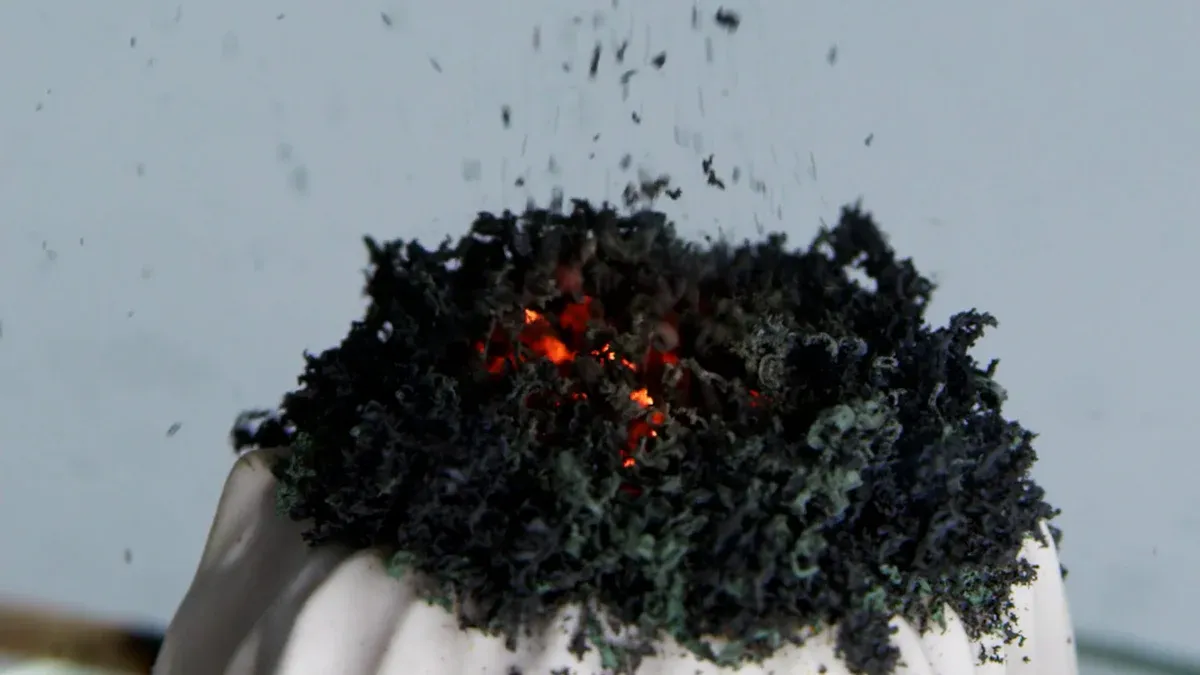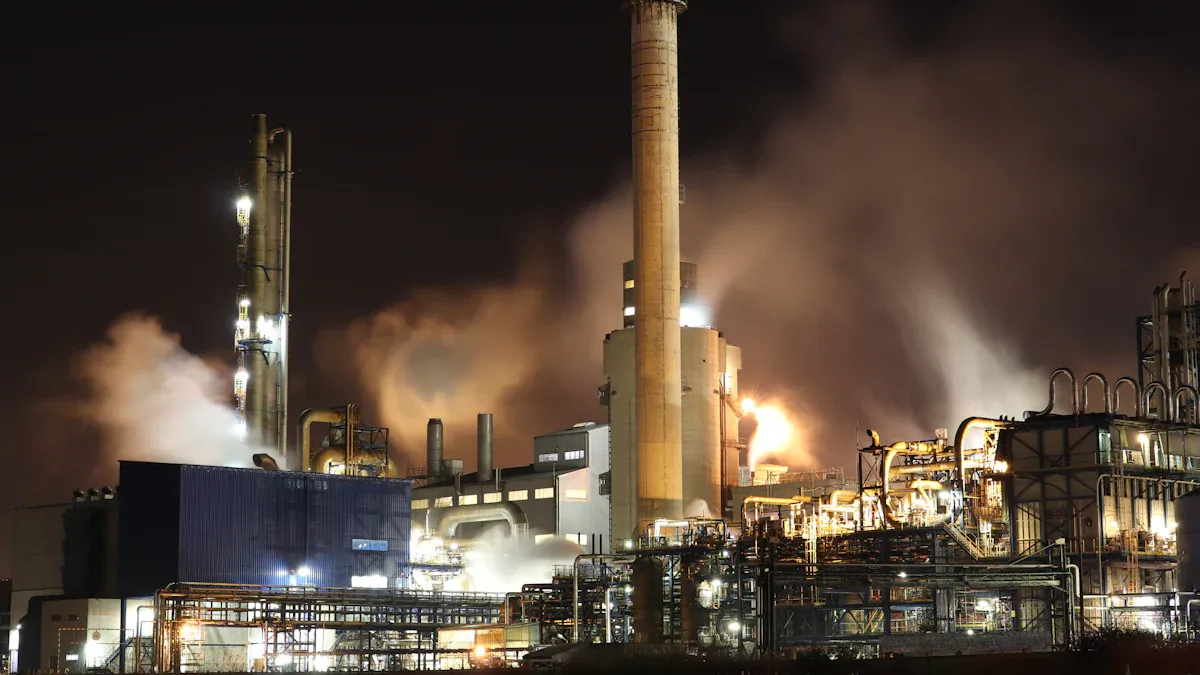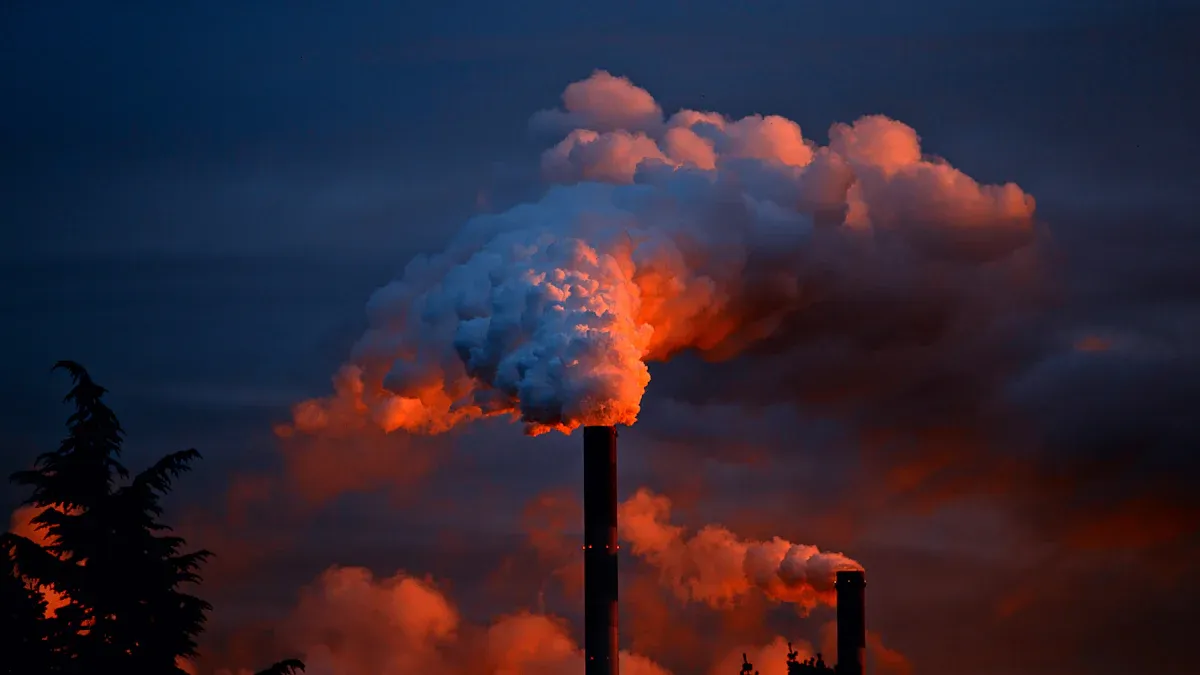
KOH impregnated activated carbon is commonly used to purify air and water by effectively removing hazardous acidic gases and other contaminants. This specialized Impregnated Activated Carbon is treated with potassium hydroxide, which enhances its ability to capture and neutralize substances like hydrogen sulfide and acid gases. KOH impregnated activated carbon is widely utilized in industrial facilities and sewage treatment plants due to its rapid action and long-lasting performance.
The global activated carbon market was valued at $5.70 billion in 2024 and is projected to grow to $10.04 billion by 2032, with an annual growth rate of 8.7% from 2025 to 2032.
Additionally, the global activated carbon market was estimated at $3,934.1 million in 2024 and is expected to reach $5,497.3 million by 2033, reflecting a yearly growth rate of 3.8% from 2025 to 2033.
Wichtigste Erkenntnisse
KOH impregnated activated carbon takes out bad gases like hydrogen sulfide and sulfur dioxide from air and water.
This special carbon has more surface area and more tiny holes than regular activated carbon. This helps it catch more pollution.
Kaliumhydroxid (KOH) is used when making it. This makes the carbon work better, so it is good for factories.
KOH impregnated activated carbon is good for the environment. It is often made from waste like rice husks, which helps the planet.
This carbon works fast. It is great for places that need quick gas removal, like sewage plants and factories.
You can use this material again after cleaning it. It still works well, so it helps save resources.
KOH impregnated activated carbon saves money. It uses less energy than other ways to remove gases.
Factories can use this carbon to follow environmental rules. It also helps keep the air clean and workers safe.
What Is KOH Impregnated Activated Carbon
Definition
You might wonder how koh impregnated activated carbon is different from regular activated carbon. It starts as activated carbon, which has lots of tiny holes. These holes give it a big surface area. That helps it trap things you do not want. When activated carbon is treated with potassium hydroxide (KOH), it becomes koh impregnated activated carbon. This treatment changes the carbon’s surface. Now, it can catch and stop acidic gases and other harmful chemicals.
Unique Properties
Koh impregnated activated carbon is special because it can adsorb more pollutants. It removes things like nitrogen oxides (NO–NO2) and sulfur dioxide (SO2) better than regular activated carbon. Scientists say this happens because the surface changes during adsorption. These changes help the carbon work better, even with small amounts of pollution. That is why koh impregnated activated carbon is good for the last steps of cleaning air and water. It helps remove even tiny bits of bad stuff.
Tipp: If you need to get rid of acidic gases in air or water, koh impregnated activated carbon works better than regular activated carbon.
Why Use KOH
You may ask why potassium hydroxide is used for this. Studies show that KOH is great for making activated carbon better at cleaning gases. For example, one study used KOH to help activated carbon catch hydrogen sulfide (H2S), which is a dangerous gas. The results showed that the temperature during making the carbon matters. If you use the right temperature, the carbon gets more surface area and traps more gas. This means koh impregnated activated carbon can be made for special jobs. You can control how well it cleans air and water.
If you want something that removes acidic gases fast and well, koh impregnated activated carbon is a great choice. It mixes the trapping power of activated carbon with the strength of potassium hydroxide. That is why many industries use it.
Wie es hergestellt wird

Rohmaterialien
You can use many things to make koh impregnated activated carbon. Some examples are rice husks, pellets, macroalgae waste, and brewer’s spent grain. Each one gives special benefits to the finished product. The table below lists some common raw materials and what makes them good:
Raw Material | Vorteile |
|---|---|
Various biomass | KOH helps make more tiny holes and bigger spaces inside. |
Macroalgae waste | Has lots of carbon and hydrogen, little ash, no heavy metals, good for making adsorbents. |
Brewer’s spent grain | Has more carbon, bigger surface area, more holes, and better at holding pollutants. |
Tipp: Using waste like rice husks or brewer’s spent grain saves money and helps recycle.
Impregnation Process
First, you mix the raw material with potassium hydroxide (KOH). This is called chemical activation. The KOH soaks into the material and gets it ready for the next step. You must watch how much KOH you use and how long you mix. This makes sure the KOH spreads everywhere. Pellets are often picked because they are simple to use and soak up KOH well.
KOH is very important in this step. It reacts with the carbon in the material. This reaction opens up tiny holes, called pores, in the carbon. These pores are needed to catch gases and other bad stuff later.
Activation Steps
After soaking, you heat the mix to very high heat, over 700 °C. This is called activation. The heat makes the KOH react more with the carbon. This makes the carbon get lots of small holes. These holes give the carbon more space to trap pollution.
You need to think about the type of material, how much KOH you use, and how long you heat it. These things change how many holes form and how well the carbon works. Using KOH instead of other chemicals makes more holes and more space inside. For example, KOH makes better holes than potassium carbonate (K2CO3). This means koh impregnated activated carbon can trap more acidic gases and bad stuff.
KOH gives a clear and good hole structure.
Other chemicals like K2CO3 do not work as well and need more heat.
The finished carbon has lots of space and is great at trapping things.
Anmerkung: The activation step with KOH is why this carbon is so good at cleaning air and water.
Wie es funktioniert
Mechanismus der Adsorption
Koh impregnated activated carbon can trap acidic gases fast. It works by adsorption. Adsorption means gas molecules stick to the carbon’s surface. Potassium hydroxide makes the surface better at catching these gases.
KOH makes more pores and a bigger surface area in the carbon. This gives more spots for gases to stick.
Using more KOH during making gives even more surface area. For example, if you use a KOH ratio of 3:1 instead of 1:1, the surface area goes up from 1152.4 to 1884.2 m²/g. This lets the carbon hold more CO2, from 2.1 to 2.5 mmol/g.
More pores and bigger surface area mean more acidic gases can be removed from air or water.
Koh impregnated activated carbon is like a sponge with many tiny holes. Each hole grabs and holds bad gases, so the air is cleaner.
Acid Gas Neutralization
Acidic gases like sulfur dioxide and nitrogen oxides need to be removed. Koh impregnated activated carbon does this by neutralizing these gases. When the gases touch the carbon, they react with potassium hydroxide. This reaction turns the gases into safe compounds.
The neutralization happens quickly. You do not have to wait long to see results. The carbon catches the gas, and the KOH reacts with it. This makes the material work very well. It is good for places that need fast and steady gas removal, like factories or sewage plants.
Tip: To keep your equipment safe and air clean, use koh impregnated activated carbon for acid gas removal.
Oberflächenchemie
The surface chemistry of koh impregnated activated carbon is very important. Potassium hydroxide changes the carbon’s surface. This makes it more active and better at picking certain gases. Special spots on the carbon attract and hold acidic gases.
Here is a table that shows how surface chemistry helps adsorption:
Mechanismus | Beschreibung |
|---|---|
Acid-Base Reactions | |
Hohe Oberfläche | The large surface area stores oxide crystals formed during adsorption. |
Selective Adsorption Sites | KOH creates sites that target NOx and SO2, allowing both to be captured at the same time. |
Chemisorbed Oxygen | Oxygen on the surface helps the carbon select NO for adsorption. |
Formation of Oxide Crystals | Oxide crystals like KNO and K2SOx can block pores, changing how the carbon works. |
Koh impregnated activated carbon does not just trap gases. It also reacts with them. This makes it a great choice for cleaning up acidic pollution.
Features Of KOH Impregnated Activated Carbon
Physikalische Eigenschaften
This material has special physical features. It has a big surface area and lots of tiny holes. These help it trap more gases and bad stuff. The KOH/char ratio changes how many holes and how much surface area there is. Look at the table to see how the numbers change:
KOH/Char Ratio | BET Surface Area (m²/g) | Micropore Content (%) |
|---|---|---|
0.5 | 731 | 80-92 |
3 | 1687 | 80-92 |
A bigger KOH/char ratio means a much bigger surface area. This gives more room to catch pollution. Here is another table that shows the pore and micropore volumes:
Oberfläche (m²/g) | Pore Volume (cm³/g) | Micropore Volume (cm³/g) | Micropore Volume (%) |
|---|---|---|---|
860 | 0.427 | 0.315 | 74 |
These numbers mean the carbon has many small holes. These holes help it grab gases like hydrogen sulfide and other acidic things.
Chemical Properties
Das chemical features make this carbon even better. KOH treatment changes the carbon’s surface. This makes it more alkaline. That helps it stop acidic gases like sulfur dioxide and hydrogen chloride. The surface gets more active, so it can hold more bad stuff.
The chemical change helps the carbon target certain gases.
The surface gets more alkaline, so it can stop acidic gases.
The process makes new holes and changes the shape, so the carbon can trap more gases.
This material is strong and smart. It can find and hold the right bad things.
Leistungsmetriken
You want to know how well this carbon works. You can check how much hydrogen sulfide it removes and how easy air moves through it. Here is a table that shows how much H2S it can catch at different speeds:
Flow Rate (L/min) | |
|---|---|
5.5 | 1.637 |
1.5 | 0.584 |
Even when air moves fast, the carbon still removes a lot of H2S. This means it works well and does not slow down the air. It can also catch more acidic things. Sometimes, it can remove up to 184.7 mg of copper for each gram, which is better than many other materials.
Tip: If you need to get rid of acidic gases fast and well, this carbon removes a lot of H2S, lets air flow easily, and works great for many bad things.
Anwendungen

Gasreinigung
KOH impregnated activated carbon is used in gas cleaning systems. It helps remove bad gases from air and factory pipes. This material works for cleaning biogas, natural gas, and factory exhaust. The table below shows how it helps:
Anmeldung | Beschreibung |
|---|---|
Sulfur Removal | Takes out sulfur compounds like hydrogen sulfide (H₂S) from gas streams, including biogas and natural gas. |
Desulfurization | Removes sulfur compounds well for petrochemical, natural gas, and factory exhaust treatment. |
Using this carbon keeps machines safe from rust. It also makes air cleaner. Many companies use it because it works quickly and lasts a long time. You can trust it to keep your gas clean and safe.
Tipp: If you need to get rid of sulfur or acid gases, this carbon is a smart pick.
Behandlung von Abwässern
This material is also used in sewage plants. It helps control smells and removes dangerous gases. Hydrogen sulfide is a big problem in sewage pipes. This gas smells bad and can hurt pipes. KOH impregnated activated carbon traps and stops these gases before they get out.
Workers put this carbon in filters or scrubbers. When air moves through, the carbon grabs and reacts with the bad gases. This keeps the air around the plant cleaner and safer for everyone.
Cuts down on sewage smells
Keeps machines safe from acid gas harm
Makes the plant safer for workers
Einhaltung der Umweltvorschriften
There are rules about letting bad gases into the air. KOH impregnated activated carbon helps you follow these rules. It takes out acidic gases and other pollution before they leave your building. This helps you obey the law and avoid getting fined.
You can use this carbon in chemical plants, refineries, and waste centers. It shows you care about the environment and people’s health.
Using this carbon proves you want clean air and a safer place to work. 🌱
Vorteile
Effizienz
You want something that works fast and saves energy. KOH impregnated activated carbon is good at trapping gases. It uses less energy than other methods. Die nachstehende Tabelle zeigt, wie es im Vergleich aussieht to another way:
Activation Method | Adsorption Capacity (g/kg) | Energieverbrauch | Carbon Emissions |
|---|---|---|---|
KOH | 729 | Unter | Unter |
NaOH | 662 | Höher | Höher |
KOH removes more gas with less energy and pollution. This helps you clean air or water quickly and save money. The KOH process makes lots of tiny and big holes in the carbon. These holes give the carbon a large surface area. This means it can catch more bad stuff in less time.
The process creates many small and big holes.
You get better results using less energy.
Selectivity
You want a filter that catches the right gases. KOH impregnated activated carbon is good at this. It is very good at trapping acidic gases like hydrogen sulfide and sulfur dioxide. The carbon’s surface changes when it is made. Metallic potassium makes more space between the layers. This creates special spots that grab acidic gases.
This carbon also likes to catch carbon dioxide more than nitrogen. In tests, it traps about 16 times more CO₂ than nitrogen. This helps when you need to clean certain gases from air.
Tip: If you want to remove certain gases, this carbon lets you do that.
Nachhaltigkeit
You care about the planet and want a green solution. KOH impregnated activated carbon has many eco-friendly benefits. Many companies use waste, like peanut-shaped packaging, to make it. This cuts down on trash and reuses old stuff.
You can also clean and use the carbon again. This means less waste. Studies show the carbon keeps its big surface area after cleaning. You do not have to throw it away after one use.
Here are some important green features:
Characteristic | Wert |
|---|---|
BET-Oberfläche | 761–1383 m²/g |
CO₂ Uptake at 273 K | 5.33 mmol/g |
CO₂ Uptake at 298 K | 4.24 mmol/g |
Selectivity over Nitrogen | ∼16 |
Source of Activated Carbon | Peanut-shaped packaging waste |
Cleaning removes trapped bad stuff and fixes the holes.
Tests make sure it is safe for the environment after use.
Making it creates some ash, but you can handle this with good waste care.
You get a product that works well, saves resources, and helps keep the planet clean.
Case Study
Industrielle Nutzung
Factories use KOH impregnated activated carbon to clean air. One wastewater plant had trouble with hydrogen sulfide gas. This gas smells bad and can hurt pipes. The plant had problems with smell and rust. Workers needed something to remove the gas fast and keep air safe.
The plant put in a filter system with KOH impregnated activated carbon pellets. These pellets were made from rice husks, so they were eco-friendly. The system took air from sewage tanks and pushed it through carbon filters. The KOH in the carbon reacted with the gas and trapped it.
Here is what happened:
Air Extraction: Fans pulled air out of the tanks.
Filtration: The air went through beds of KOH impregnated activated carbon.
Gas Removal: The carbon trapped and stopped the hydrogen sulfide.
Clean Air Release: The system let clean air out of the plant.
Anmerkung: You can use this kind of system in other places, like food factories, chemical plants, or biogas sites.
Results
After the plant used KOH impregnated activated carbon, things got better. The air smelled fresher around the plant. Workers had fewer complaints about bad smells. Machines lasted longer because the carbon stopped rust and damage.
The table shows what changed before and after using the carbon filters:
Measurement | Before Carbon Filter | After Carbon Filter |
|---|---|---|
H₂S Level (ppm) | 45 | <1 |
Odor Complaints per Month | 12 | 1 |
Equipment Corrosion Events | 5 | 0 |
You can see the KOH impregnated activated carbon took out almost all the hydrogen sulfide gas. The plant saved money on fixing machines and kept workers safe. The system also helped the plant follow air quality rules.
If you want to stop acid gases and protect your machines, KOH impregnated activated carbon is a good choice. Many companies use it because it works fast and well.
You get lots of good things with KOH impregnated activated carbon.
It grabs more CO₂ because of its special way of catching it.
The tiny holes help it trap gases fast and pick the right ones.
You save money since it is simple to make and stays strong even in hard places.
Material | H₂S Adsorption Capacity (mg/g) | Performance in Humidity |
|---|---|---|
13X Zeolite | 142 | Gets worse |
KOH Impregnated Activated Carbon | Works better |
You can count on this material to remove gases well in factories or treatment plants. Use it for any job that needs quick and strong gas trapping.
